“Light air, hazy sunshine.” Could there be a more reassuring weather forecast than that when you’re swallowing anti-seasickness pills in anticipation of a morning on a lobster boat, hauling pots off Ireland’s Eye?
"Calmest day of the year so far; if it was yesterday, we'd have had to cancel," says Steven Farren, skipper of Celtic Spirit II, a lobster boat that fishes out of Howth.
Even so, I’m glad I’ve taken the pills as we pull on life jackets and head out into the harbour, the little boat sitting low in water that is as calm as a pond.
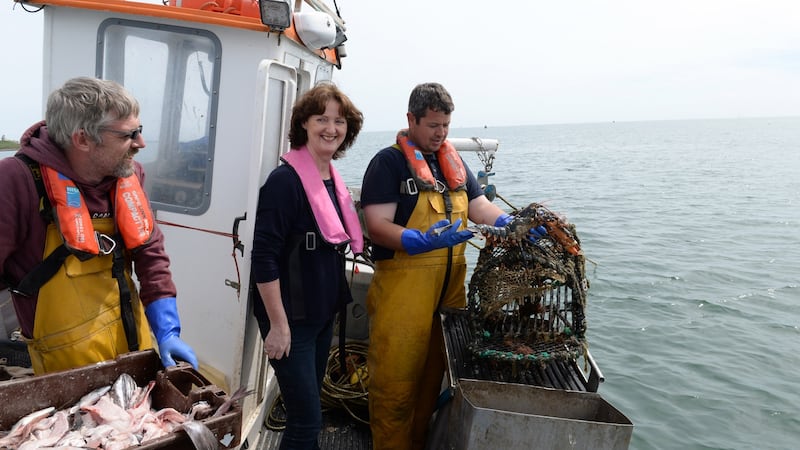
Gareth (Gaz) Smith, chef proprietor at Michael's restaurant in Mount Merrion, Co Dublin, is on board to see exactly where the lobster and crab he is selling comes from, and we are headed out to a line of lobster pots in the shade of The Stack, Ireland's Eye's distinctive rock formation that is home to a colony of gannets.
In a move to keep costs down, Smith recently decided to go straight to source for his shellfish, buying lobster direct from Farren, and crab from Robert Markey of Lambay Crab and Lobster. Markey, who runs his company with his brother Gerry, is also onboard for this recce.
At this time of year, lobster is plentiful, so Smith is paying Farren €15-€20 a kilo. “My wholesaler wouldn’t come down below €30,” the chef says. The margins are still tight. The fisherman might get €25 for a decent-sized specimen from the chef, but by the time it ends up on a dinner plate at Michael’s, with its accompaniments, including crab claws, the price will only have risen to €49.
Smith’s wife, Rita, picks the shellfish up at Howth pier several times a week and delivers it across town to the restaurant, where the lobster is boiled and shelled, and awaits a quick dip in lemon and garlic butter just before being served to that night’s diners.
For Smith, it is proving to be an effective way of getting top quality Irish shellfish on his menu, at prices people are willing to pay. By buying it off the boat, he is able to offer a whole lobster and crab claw platter, for two people, with Hollandaise sauce and chips, for €49 (half lobster and crab, €27).
Peak season
June to September is peak season for lobster in Ireland, and Farren has 200 pots in the water, from which he will haul 70kg-100kg of lobster, in a good week. His seven-metre boat cost him €50,000 and he paid €40,000 for his licence to fish for shellfish with traps or pots (no nets allowed).
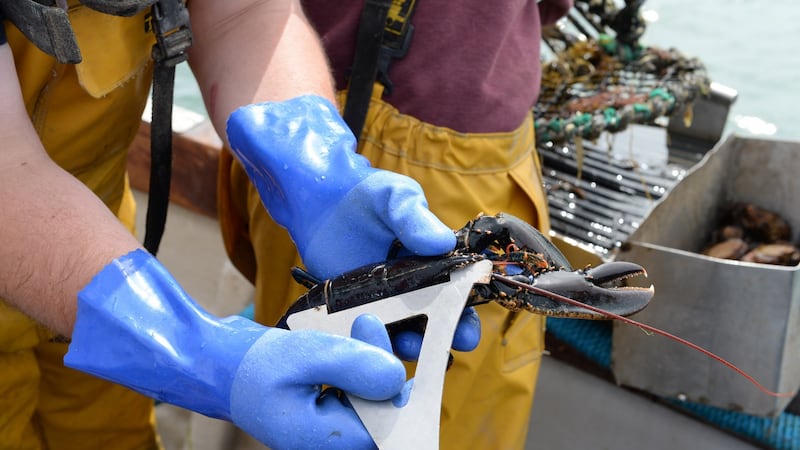
He has been fishing since he was 15 – “22 years of hard labour” – he says with a smile. This morning, with the sun shining and the water calm, it looks like an idyllic way to make a living, but it isn’t always so.
“It’s a tough industry for a little boat like this,” Farren says. “For four months of the year, you have no income. In winter you might be out all day and not catch enough to pay for your bait. You need to either be mad, or love the job to do it – the financial reward is not the appeal.”
As we draw nearer to Ireland’s Eye, buoys marking the position of pots in the water become more numerous. Each fisherman has his own set of markings to identify his pots, and they know, from experience, and with the help of GPS, where their stock is.
Bad weather can cause the pots to be damaged or lost altogether, and replacing a “string” of 10 pots can cost about €600.
There are eight or nine lobster boats with pots in this area, Farren tells me, and it comes down to “a gentlemen’s agreement”, on who puts their pots where.
The first two pots Farren and Markey haul from the depths are empty, save a few small velvet crabs, good for stock or bisques only, and a juvenile lobster who is too small to catch. It takes seven years for a lobster to reach maturity, and there is a minimum size, below which they cannot be landed.
“Next year, he’ll be still here, and ready for sale,” Farren says, tossing the youngster overboard to enjoy another year in the murky depths.
But there will be lobster for lunch. A huge specimen, 1.75kg in weight and about 15 years of age, has been hauled aboard, and Smith has his name on it. The chef plans to take this one back to the restaurant and cook it.
He will serve it along with some of Markey's Lambay crab, which has been landed earlier that morning and cooked and shelled at his processing unit in Baldoyle. The crab is shelled by hand, and is not pasteurised, which means it has a short shelf life, but chefs seek it out for its superior flavour.

Killing a lobster
But first there is a 1.7kg bruiser, currently straining against the rubber bands binding its claws as it makes a break for freedom on the restaurant kitchen counter, to be dispatched.
There are several ways to approach this. You can put the lobster into cold water and bring it slowly to the boil, but some think this is the most inhumane method. You can drop it into rapidly boiling water, but many say this makes the flesh tough; or you can, if you know what you’re doing, insert a knife firmly at a point in the head there the spinal chord is severed.
“I’ve tried all the methods of killing lobster,” Smith says, before wrenching the crustacean’s head from its body in one quick, practised move. It is brutal, but effective, and over in seconds.
He says the knife method means that the lobster’s brain comes into contact with the flesh and can taint it. “And I find if I do it with a knife, they’re still thrashing slightly for about two minutes, but if I do it this way, in 10 seconds, they’re gone.”
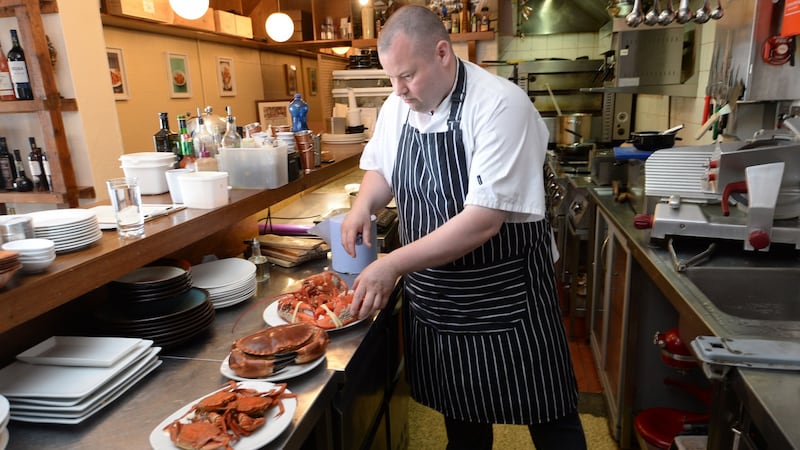
Cooking
Dispatching the lobster this way also allows him to cook the bigger claw for 11 minutes, while the tail cooks for eight, and the smaller claw gets just seven minutes in water that is gently simmering, not boiling, as that would toughen the delicate flesh.
“Next week I’m going to keep the lobster knuckles,” Smith says, talking about the joints on each claw that have some of the crustacean’s tastiest meat, but require time-consuming picking.
“I’m thinking of getting Rita to make ravioli with it, which I will serve with a lobster bisque,” he says.
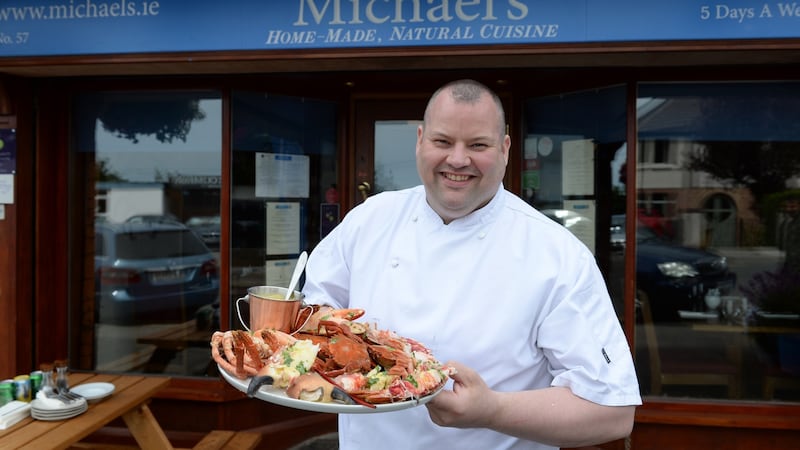
Rita is beginning to sound more and more like the restaurant’s secret weapon. As well as looking after the couple’s two children, and doing all those lobster and crab pick-ups and deliveries, she also makes all the fresh, filled pastas for Michael’s.
“We sell about 100 to 120 portions of filled pasta a week and there are 12 pieces in a portion,” Smith says. That’s a lot of rolling, piping, cutting and folding.
Today, though, it’s just shellfish, a bounteous platter of it, bathed in lemon and garlic butter, that’s on offer at Michael’s. The closed sign is on the door as it is Monday afternoon, but there are envious glances from passersby as we sit in the sunshine at a picnic table outside, getting stuck into by far the best crab I’ve eaten, as well as that delicious lobster.
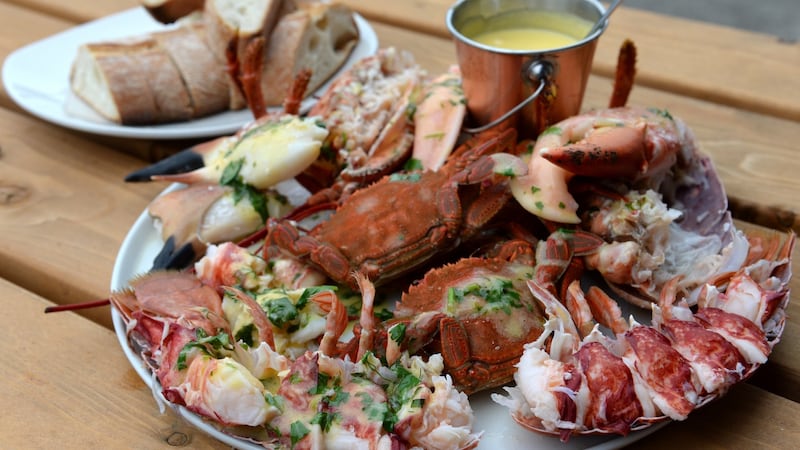
This is a chef who is going the extra mile to get the best produce for his customers, at the best price. It’s an endeavour that’s worth supporting.
Celtic Lobster takes orders on 085-7351361; to order Lambay crab, telephone 085-2740922.




















